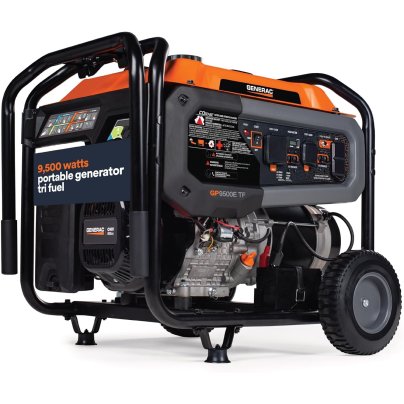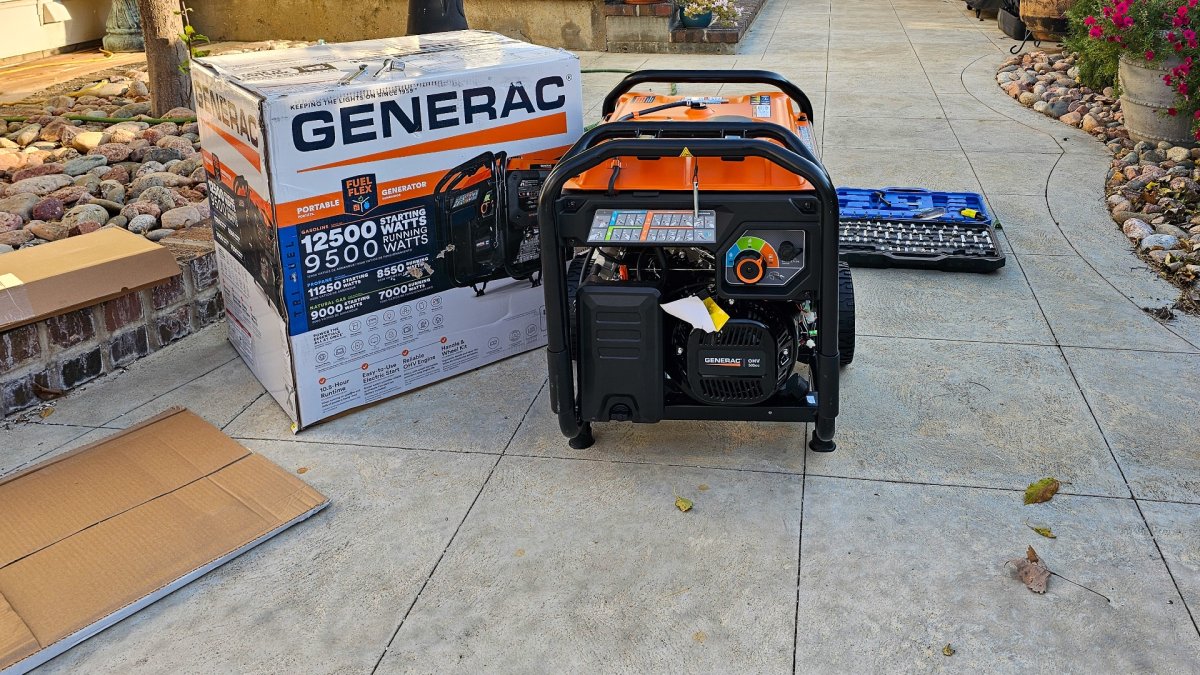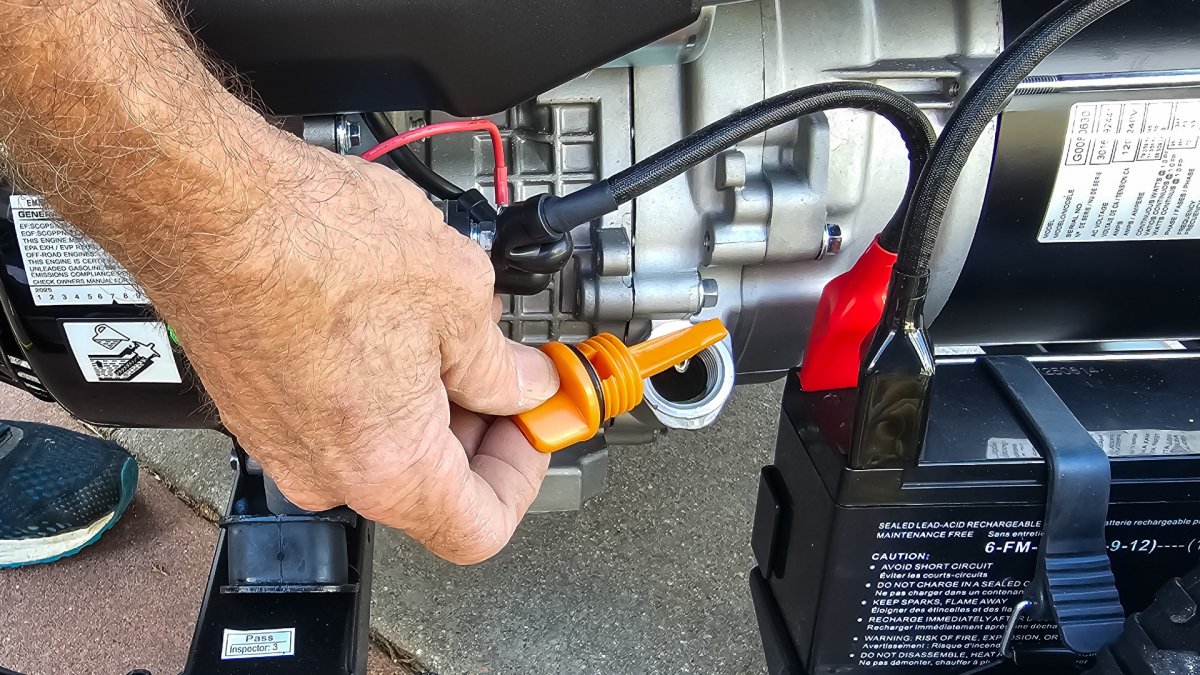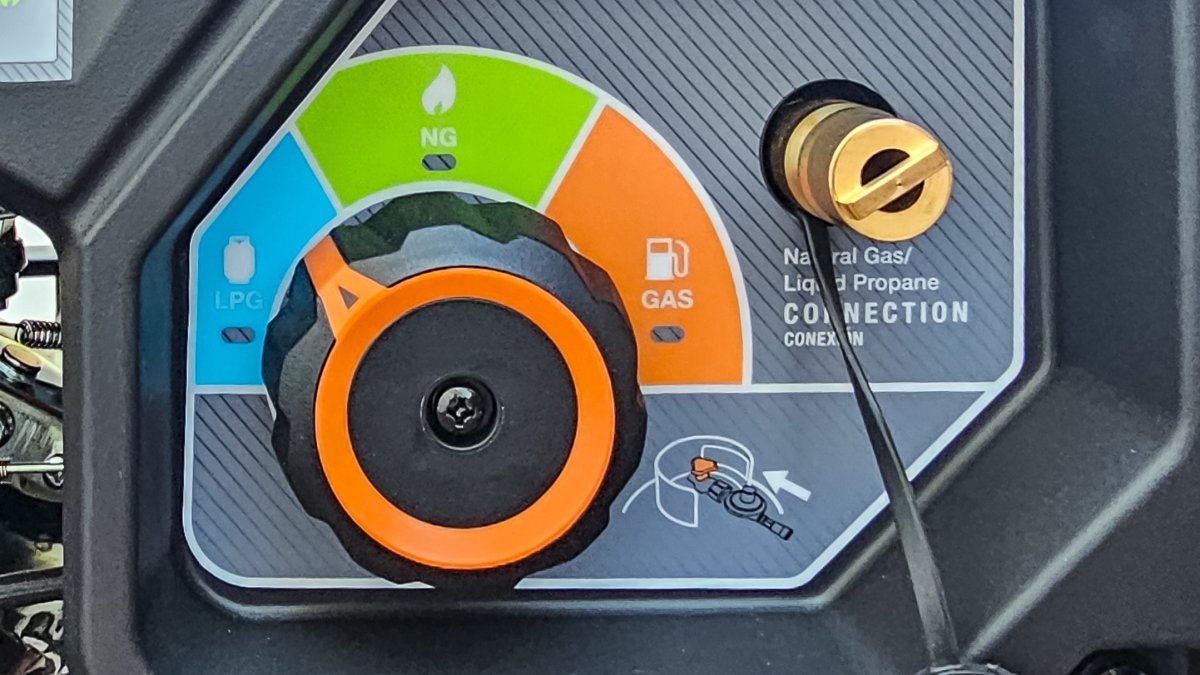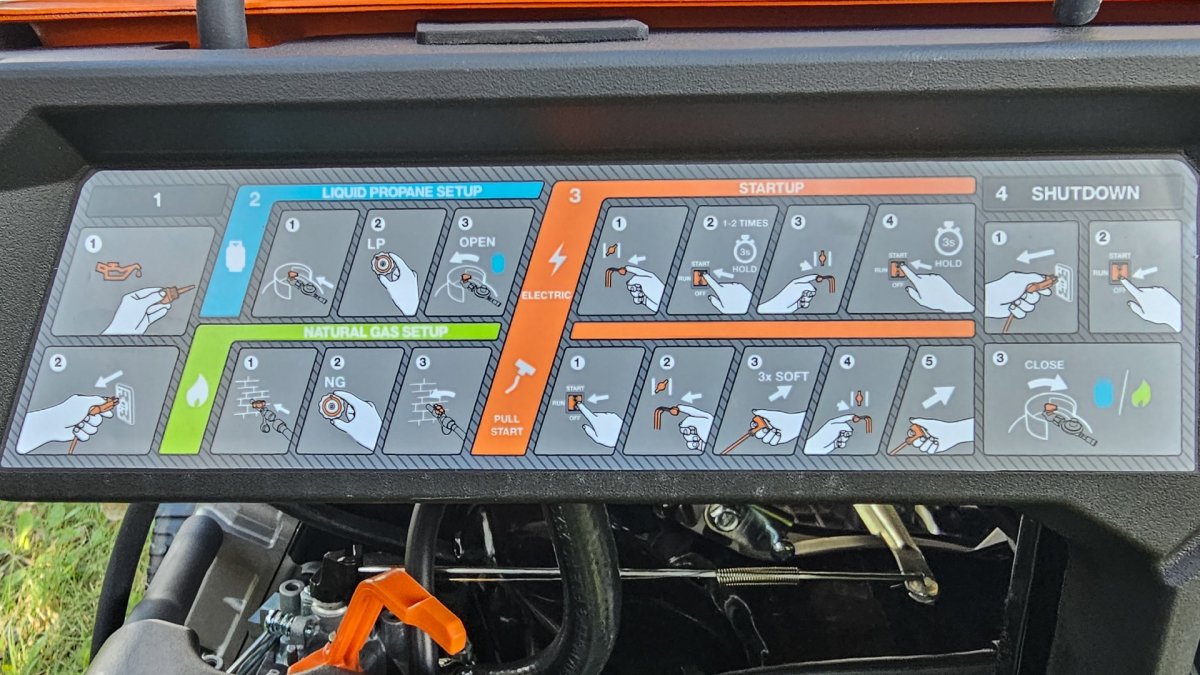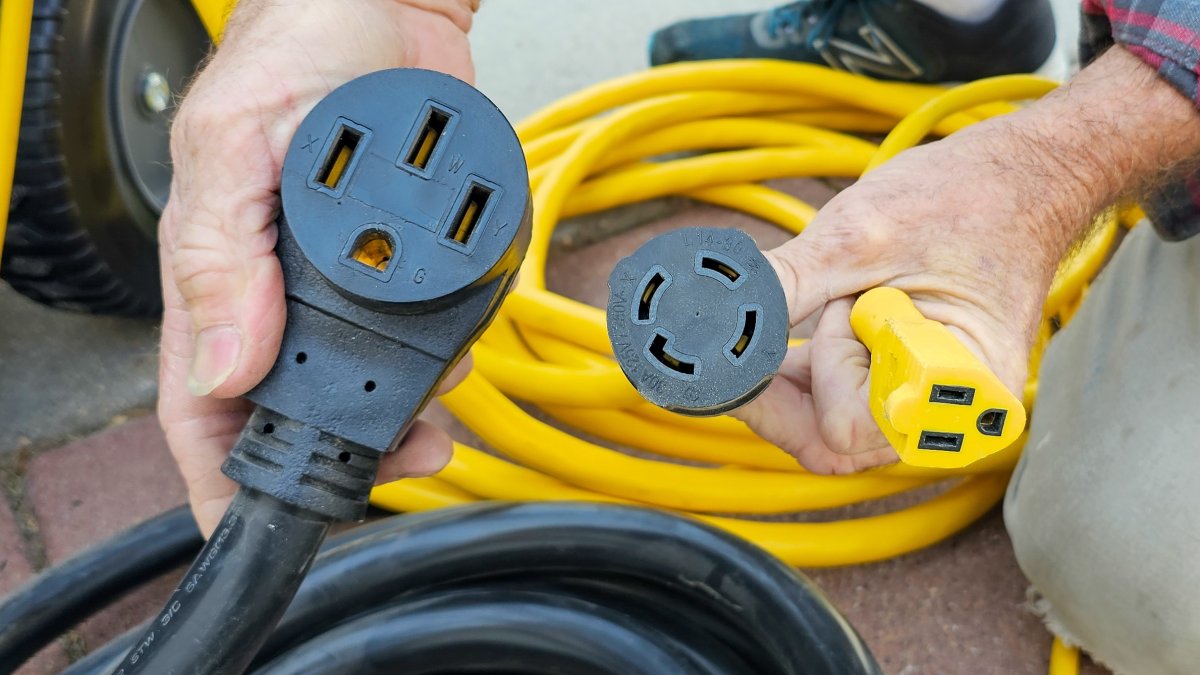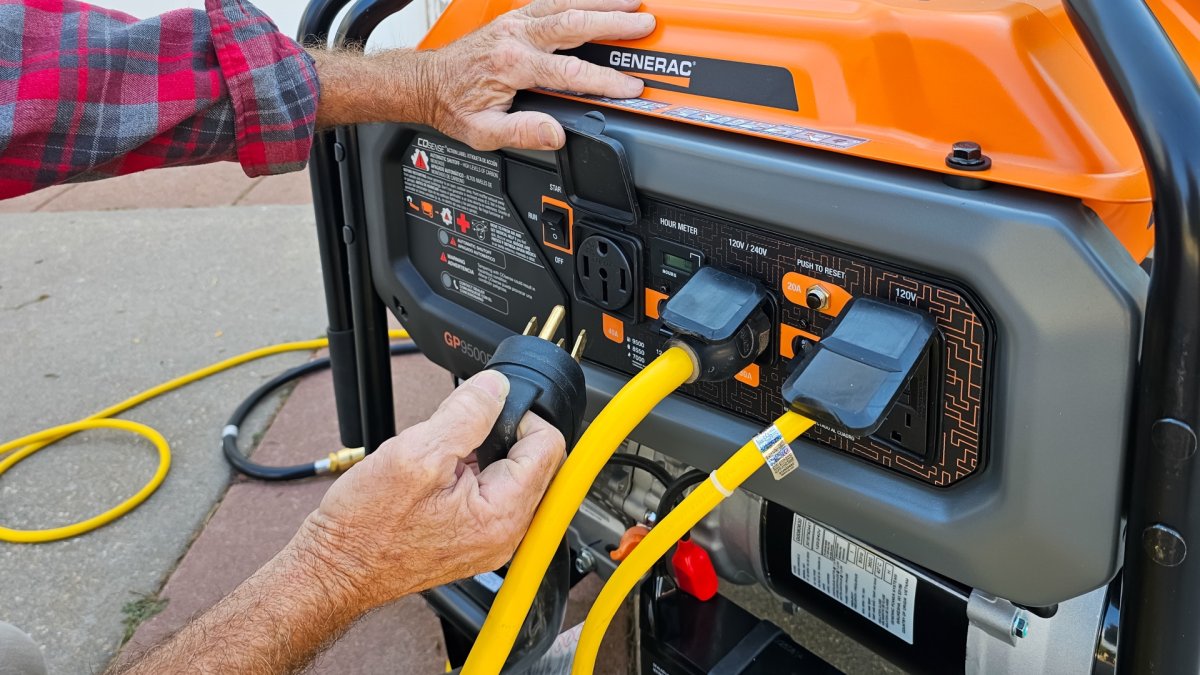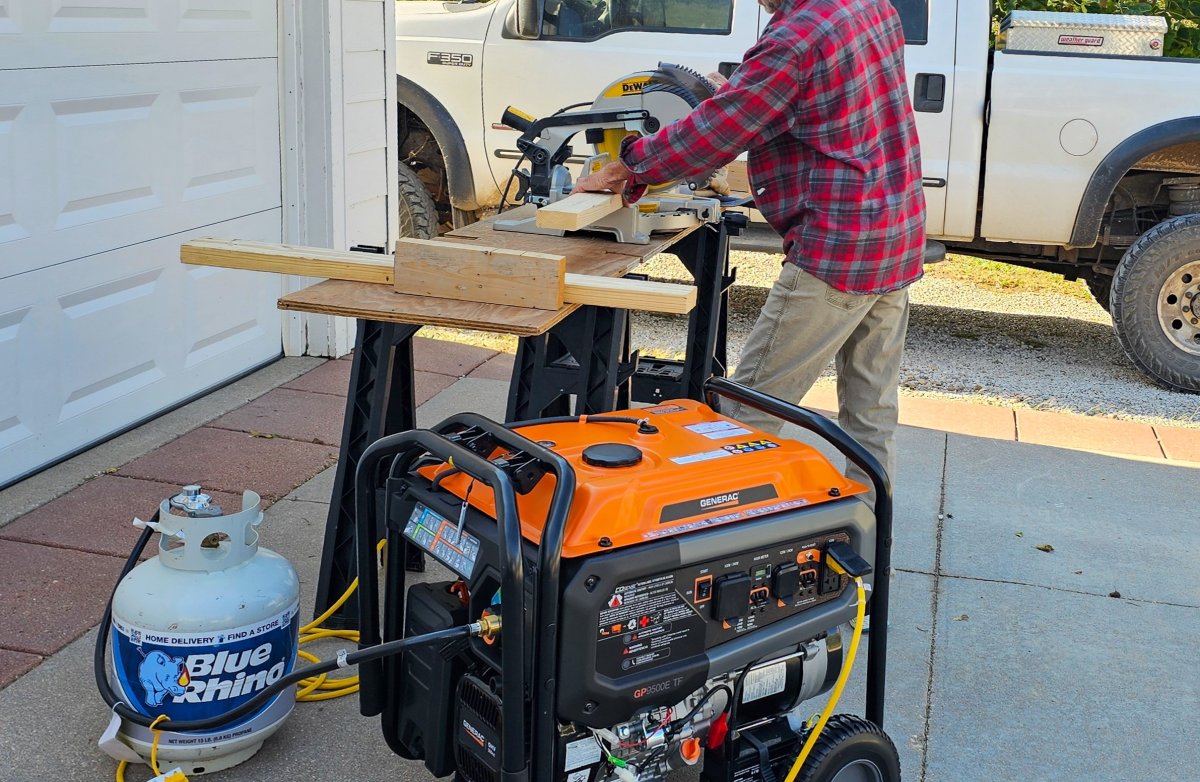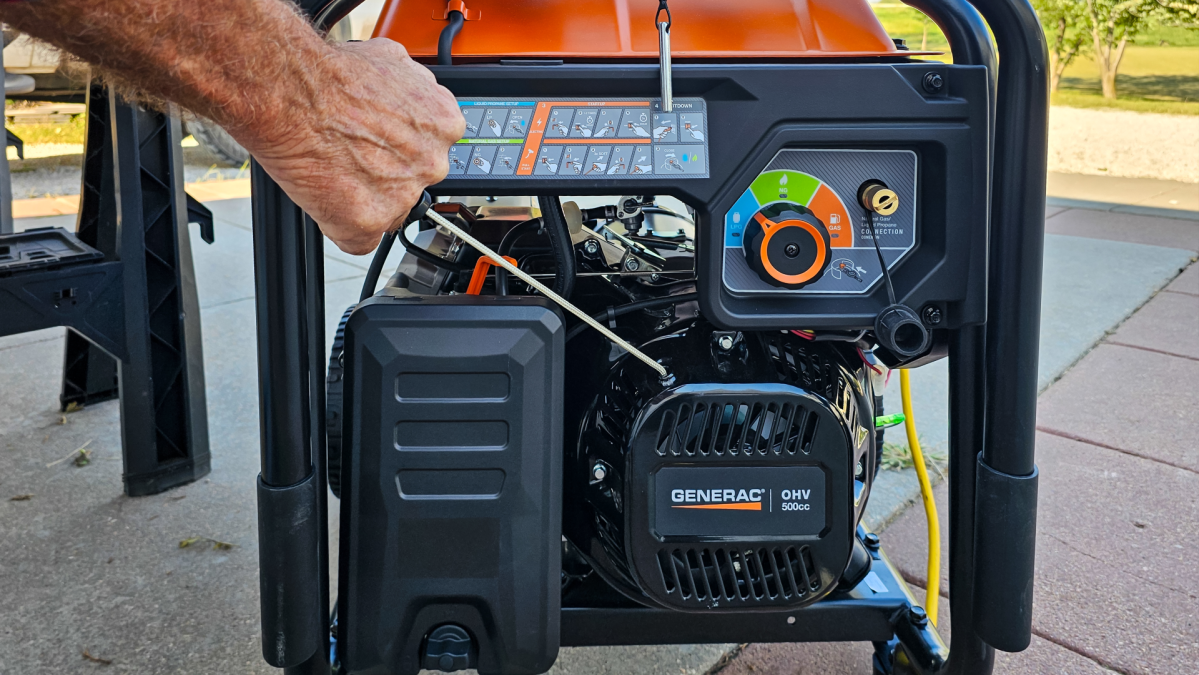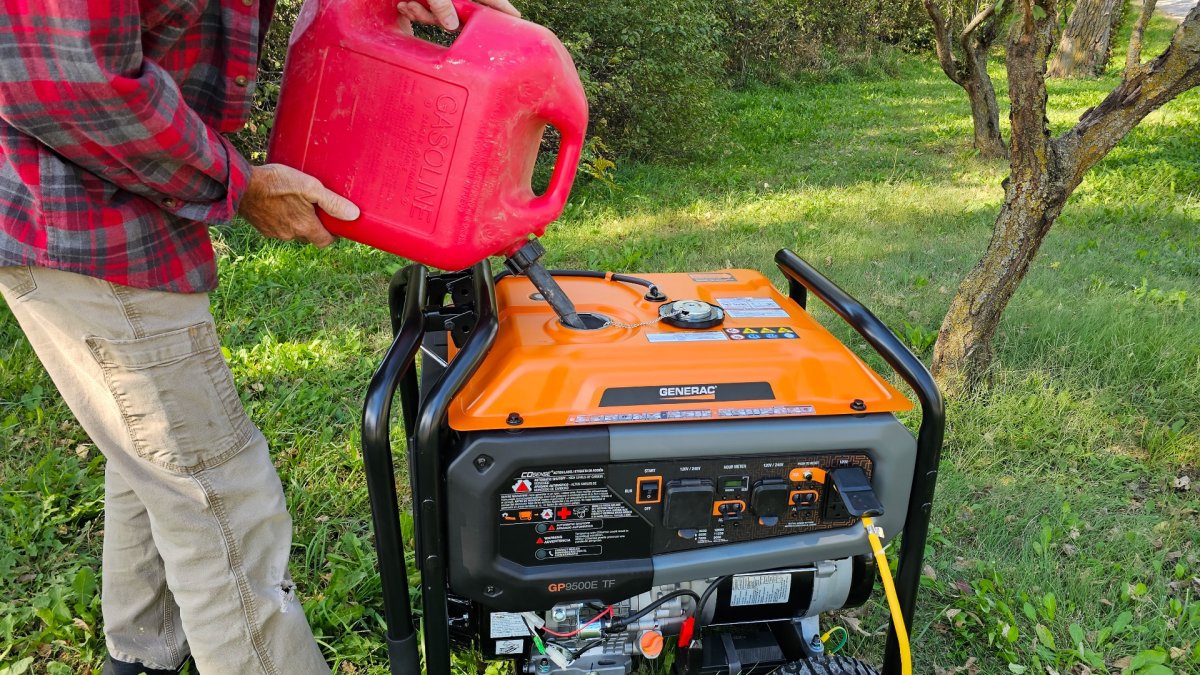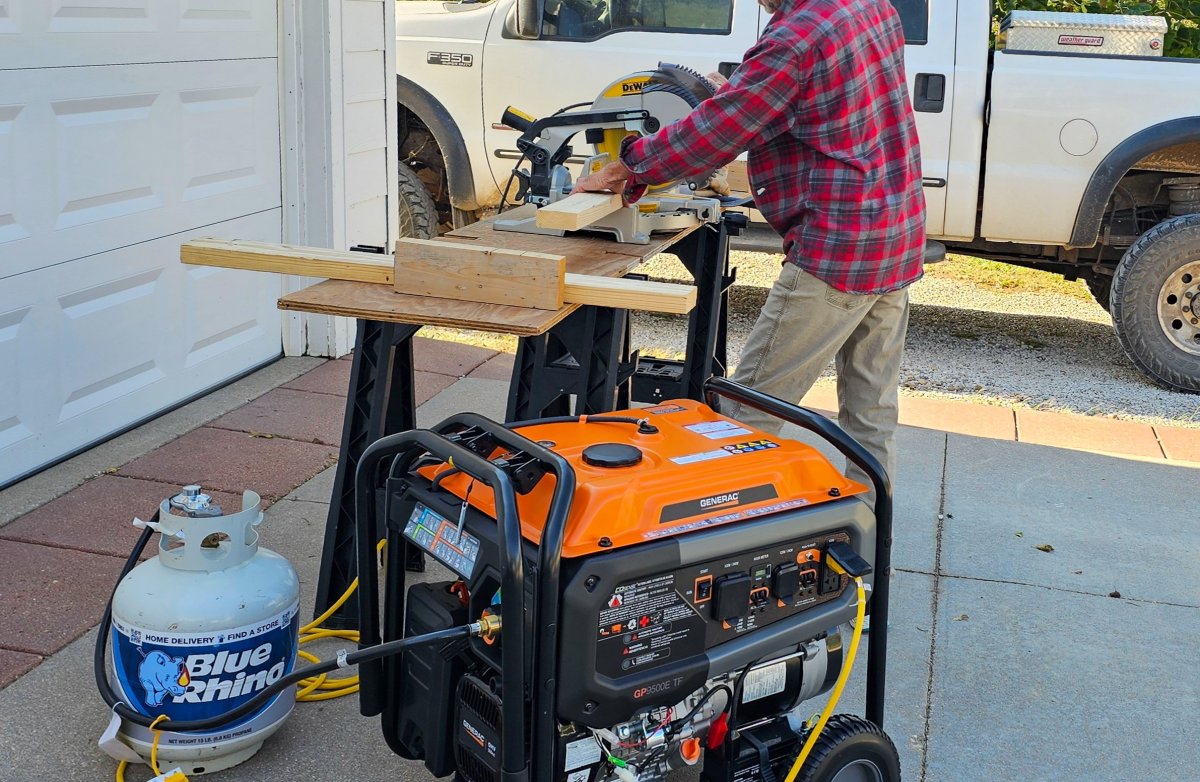

We may earn revenue from the products available on this page and participate in affiliate programs. Learn More ›
Rating: 4.8/5
Storms, outages, and supply shortages are inevitable—but losing power doesn’t have to be. Not many portable generators can match Generac’s GP9500E Tri-Fuel for raw power, flexibility, and all-around reliability. It’s built to keep essential household circuits running, no matter whether you’ve got gasoline, propane, or natural gas on hand.
I put it to the test to see if it’s truly the all-in-one backup solution it claims to be. I tested the GP9500E using both gasoline and propane, but we don’t have a natural gas hookup. (Anyone planning to run it on natural gas will need a licensed plumber to install a compatible quick-connect fitting and verify proper pressure.)
During testing, the generator easily powered a large freezer, window air conditioner, microwave, and several power tools—though not all at once.
Gasoline vs. Propane: What to Expect
The GP9500E delivers excellent power on both fuels, and it has the flexibility to run continuously on natural gas if connected to a home supply.
In my testing:
- On gasoline, with my mixed loads (freezer + AC + a few tools), the 7.9-gallon tank ran comfortably for about 8½ hours at half load—right in line with Generac’s published runtime estimates.
- On propane, the runtime was naturally shorter. A 20-pound tank (about 4.6 gallons) will typically provide around 4½ hours at half load, or close to 9 hours on a 40-pound tank, depending on temperature and demand. I didn’t test all the way to cutoff, but fuel use was consistent with these averages.
- If you have natural gas, Generac lists the GP9500E at roughly 7,500 running watts and 9,500 starting watts. Output is slightly lower likely due to the fuel’s lower energy density, but runtime is virtually unlimited. Just note that installation should always be done by a licensed plumber or gas technician.
Outlets and Features
The GP9500E Tri-Fuel comes with all the connections and safety features most homeowners or contractors could want. The control panel includes two 120V 20A GFCI duplex outlets for standard household use, plus a 120/240V 30A twist-lock (L14-30R) and a 120/240V 50A straight-blade (14-50R) outlet for heavier loads or to connect a transfer switch setup. Each outlet has its own circuit breaker—20-amp singles and 40-amp doubles—for built-in overload protection.
Although the GP9500E includes a 50-amp outlet, it’s protected by a 40-amp breaker to match the generator’s output capacity. That means you get the convenience of a full-size 50-amp connection but with proper safety limits built in.
All outlets are covered with weatherproof guards, which I appreciated while working outdoors on a misty day, and the panel also includes an hour meter to track maintenance intervals. A standout safety feature is Generac’s COsense technology, which automatically shuts the unit down if carbon monoxide levels become unsafe—a crucial safeguard for anyone running the generator near a garage or covered area.
Overall, it’s a well-laid-out control panel that balances accessibility, safety, and flexibility, whether you’re powering your home, workshop, or jobsite.
How Stable Is the Output Under Heavy Loads?
When I powered up a commercial miter saw, which typically causes a sharp startup surge, the GP9500E barely flinched. The voltage drop was minimal and almost inaudible—far less pronounced than with smaller generators I’ve used. That steadiness gave me confidence to run heavy loads without worrying about damaging sensitive equipment.
Throughout the entire testing phase, the GP95000E held steady under load, and handled start-up surges well. You could probably push it beyond its rated capacity, in which case you might notice brief power dips, but I never reached that point in my tests.
How Much Power Can It Really Provide?
With 9,500 running watts and 12,000 starting watts on gasoline (or 8,500/11,250 on propane), the GP9500E can power most essential home circuits, though not an entire house at once.
Here’s what common appliances typically require, based on data from Generac’s documentation:
- Refrigerator: 700 watts
- Window air conditioner (12,000 BTU): 1700 watts
- Sump pump (½ horsepower): 1500 watts
- Microwave oven: 700 and 1000 watts
- Electric stove: 1500 watts per burner
- Gas furnace blower: 875 watts
- Television: 50 to 300 watts
- Coffee maker or toaster: 1000 to 1750 watts
- Electric blanket: 400 watts
A typical load mix—say, a refrigerator, freezer, gas furnace blower, a few lights, and a small AC unit—will draw around 5,000 to 6,000 watts, leaving a comfortable buffer for startup surges or a power tool. For the best performance and to extend engine life, aim to stay below about 7,500 watts of continuous use.
Noise Level and Ease of Use
Generac doesn’t publish an official decibel rating for the GP9500E Tri-Fuel, but based on my experience and typical readings for open-frame generators in this size range, it likely operates around 68 to 75 dB under load—noticeable but standard for its class. It was certainly audible, especially up close, but when placed a safe distance from the house, the sound was easy to live with. If noise is a primary concern, an inverter generator might be a better option.
Assembly was simple—I just attached the handles and wheels, and it was ready to go. Despite weighing about 219 pounds, it was relatively easy to maneuver thanks to its balanced design and sturdy wheels.
Who is The Generac GP9500E Best For?
After testing it on both gasoline and propane, I can confidently say the Generac GP9500E Tri-Fuel is one of the most capable portable generators in its class. It’s ideal for homeowners who want reliable backup power for critical systems during outages, especially those running major appliances like refrigerators, freezers, sump pumps, and small air conditioners simultaneously.
It’s also a great fit for contractors and jobsite use, where fuel flexibility and steady power output are huge advantages.
The tri-fuel versatility gives it a real edge for preparedness-minded buyers. Being able to switch between gasoline, propane, and natural gas means you’re never dependent on a single fuel source, which is a major advantage during long outages or supply disruptions.
That said, this model might be more generator than some users need. If your goal is just to power a few lights, charge devices, and keep the fridge cold, a smaller 4,000- to 6,000-watt unit will save money and fuel.
At around $1,200 (prices vary by retailer), the GP9500E is a serious investment—but it’s built for serious power. For anyone who values durability, long runtime, and the freedom to choose between three fuel types, this Generac is a workhorse worth every penny.
